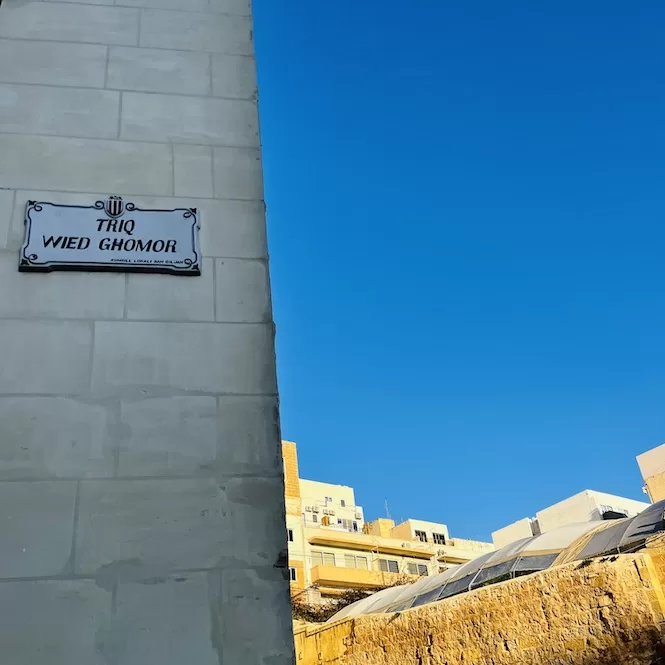Most people in Malta speak the Maltese Language (Lingwa Maltija). A hybrid of Semitic and Romance languages, it is the only Semitic language in the European Union. People have spoken Maltese since the arrival of the Arabs in the 9th century. However, through history, it developed independently of Classical Arabic in a gradual process of Latinisation. Because of this, Latin script always was used for the written Maltese language.
Maltese is a remarkable and distinct language with many unique characteristics. The most important and unique feature of Maltese is its Semitic grammar. The Maltese language uses many prefixes, suffixes, and vowel sounds. This is uncommon for Romance languages. Maltese grammatical rules are very different from Italian. Although some words use noun pluralisation patterns as used in English or Italian.
What Language is Spoken in Malta?
There are two official languages in Malta: Maltese (Malti) and English. Both languages are used to different degrees of skill and in various contexts, often resulting in switching and mixing. Nevertheless, many regard the Maltese language as essential to their cultural heritage.
Until 1934 also Italian was used as Malta’s official language. Most Maltese can speak Italian fluently. Italian wasn’t an official language in Malta for a long time, but it played a big role. Italian TV was the only one available in Malta until 1990. That’s why a lot of people speak it.
The Maltese Language Origin
Where does the Maltese language come from, you ask? Well, Maltese language origins are controversial because no one can agree on when it emerged. Yet, most researchers agree that Maltese is a Semitic tongue, the same as Ethiopian, Arabic, Aramaic and Hebrew. In addition, historians believe that the Maltese Language is an Arabic dialect spoken in the Maghreb and Sicily around the year 1000.
The heavy influence of Arabic on Maltese is evident in the vocabulary of the language. Arabic words make up around one-third of the Maltese language, especially those describing simple ideas and concepts. However, Maltese is also very similar to other Semitic languages, such as Hebrew, Amharic and Aramaic. The similarities between these languages show that Maltese is likely a Semitic Creole language. Creoles are languages created by mixing two or more languages.
Historical Timeline of the Maltese Language
The Language of Malta: Prehistory
We don’t know what language was spoken in Malta in prehistory. It could have been “Mediterranean” or Indo-European, but the first settlers from Sicily left no writing.
The Arab Rule
Maltese came into being in the 9th century and ruled the island for 400 years. Many things were influenced by their stay, but one of their most significant legacies is the Maltese language. There are many clear signs that this language has Arabic roots, like place names, numbers, and days of the week.
Norman Rule
Malta was part of Sicily’s crown during the Norman reign. The Muslim religion gradually faded away and was replaced by Christianity. As the Maltese language was separated from its Arabic source, it started to take on its own identity.
Pietro Caxaro first mentioned the Maltese language in 1436 as the lingua maltensi.
The Language of Malta During The Rule of the Knights
The subsequent significant influence on the Maltese language came from Northern Italian settlers during the rule of the Knights of St. John, who occupied Malta from 1530 to 1798. Italian replaced the written language. However, the Knights did not control the spoken language. Books were available in Latin and Italian, considered high languages. Despite this, most people had no education, and literacy hovered around 10%, so they were primarily monolingual.
3,500 Romance-speaking people, including sailors, soldiers, and servants, moved to the island over the centuries. A lot of Italians and French people came to Valletta to work, and some of them married local women. As a result, the Maltese got many more Italian terms in their vocabulary. It’s how Arabic and Italian vocabulary started to blend.
Napoleon Takeover
Napoleon Bonaparte sent troops to conquer Valletta in 1798. During the two years of French rule, they abolished slavery and made education accessible. However, the Maltese resisted the French and tried to retake Valletta. After several failed attempts, the Maltese called the British for help.
The Maltese Language During The British Rule
The British decided to keep Malta in 1813 and began Anglicising it. During the British colonial era, Maltese people of the educated classes refused to speak in English, thinking the Italian language was enough. Also, many Italian exiles lived in Malta, promoting Italian culture. In the early 20th century, Royal Commissions suggested strengthening English and eliminating Italian in schools, but many people resisted. Only in the 1930s, when fascist Italy became the enemy, did the British step up efforts to undermine the Italian language. Public notices, street names and shop signs were only available in English. In 1934, the Maltese gained official status alongside the English.
Independence in 1964
After gaining independence from Britain in 1964, the Maltese government standardised the language.
Italian television became available in Malta, reviving the popularity of the Italian language. Until 1990, the Italian language was a source of entertainment and information. It is true that many Maltese speak Italian fluently.
As a result of the incredible history of Malta, today’s Maltese vocabulary is one-third of Arabic origin, about half derived from Sicilian and Italian, and the rest English words with some French influence.
Following are a few examples of Maltese words with Semitic roots:
- il-kelb (dog)
- il-ħobż (bread)
- il-ġenb (garden)
- il-ħajja (life)
- il-ħanut (food)
Here are some Maltese words with Italian roots:
- il-festa (party)
- il-kamra (room)
- il-ġurnata (day)
- il-karta (card)
The following Maltese words have English roots:
- il-kapitali (capital)
- il-kantina (canteen)
- il-kompjuter (computer)
- il-kwartier (neighborhood)
Maltese “Bonġu” (Hello, Good morning) comes from the French word “Bonjour”.

If you want to understand Malta’s history well, take a walking tour in Valletta. Look at my guide for the best Valletta walking tours.
Best Ways to Learn the Maltese Language
Learn Maltese, and you’ll get a better understanding of this fascinating island nation. No matter what you choose, whether it’s books, audio lessons, or online tools, you’ll have a memorable time. Experience it all by reading local authors’ stuff, listening to native music, watching shows about native customs…whatever you want! Meet real Maltese people and practice telling stories, discussing current events, and doing anything you need to do to become fluent.
Some Maltese words
Bonġu [pronounce Bon-ju] – Good morning
Kif int? [pronounce Kif int?] – How are you?
Grazzi ħafna [pronounce Grats-ee hawf-na] – Thank you very much
For more, check this website.
To learn more about Malta’s culture and history, check out my guides about Top Malta’s Historical Sites, Malta’s Unesco Sites, Valletta, Mdina and Three Cities. These places are must-sees for all history lovers.
Have questions about your Malta trip? Join my FREE private Facebook group, Malta Travel Tips, where you can find helpful resources and connect with fellow travellers!




